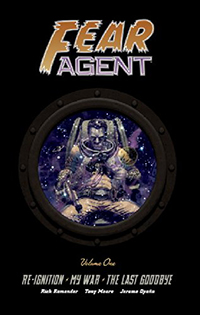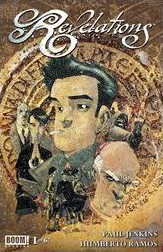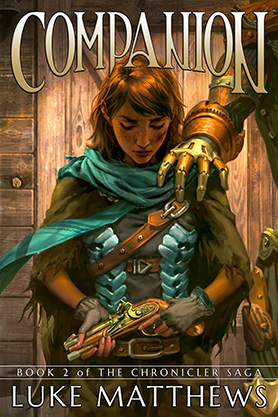My first experience at a comic book convention was in Portland, Oregon, within a few weeks of the launch of Image Comics. The show took place in a gutted department store at one end of a mall, and five of the six Image founders were in attendance (they were sans Erik Larsen). I can trace my hardcore comic fandom directly to that show, and to my overwhelmingly positive experiences meeting Jim Lee, Todd McFarlane, and Marc Silvestri. Spawn #1 had not yet released but I was a huge fan of McFarlane’s Spider-Man, and when 13-year-old me got to tell him so, he actually pulled me behind his signing table and talked with me for 15 minutes about comics, the Blazers, and Spidey. It was a formative moment for me.
In the late-80’s and early-90’s, meeting creators from your favorite Marvel and DC books was not an easy endeavor. The guys in charge of some of the most iconic characters of all time were cloistered and egomaniacal (from a fan’s perspective), and experiences like my moment with Todd McFarlane were almost impossible to track down. Back then, when San Diego Comicon was still actually about comics, creators never really seemed to be encouraged to engage their fans on a personal level. Even this experience, I believe, was only possible because the founders of Image were already trying to change how the industry worked.
I began to understand why these experiences were unavailable during a trip to a comic book convention at Seattle Center when I was in high-school, in (I think) 1994. It was a tiny show, occupying only two rooms, with a smattering of artists and writers around the edges signing autographs. I had sketches done by Dan Norton and Joe Benitez, milled around the back issue bins, and finally – after waiting what seemed like forever – got to meet and get a signature from Walt Simonson.
As I neared the front of the line, it was obvious that several of the people in front of me were comics dealers. Every one of them had stacks upon stacks of comics for signing, including multiple copies of the same book, and manners were nonexistent. Mr. Simonson was visibly frustrated. The straw broke the camel’s back with the guy in front of me, who plopped down a stack of easily fifty-plus books, and began smarming at Mr. Simonson as though the two of them were on the golf links together.
In one of the most memorable moments of my life, Walt Simonson stared this guy down as he jabbered, stopped him from talking with a raised hand, and said “Excuse me. When did I give you leave to address me in the familiar?” He then took the top book off of this guy’s stack, signed it, replaced it, slid the entire rest of the stack to the side, and waived me up to get his signature.
This, for me, encapsulated everything that was wrong with the comics industry in the 90’s. At age 16, that moment changed how I looked at the books I bought and read. Over the next couple of months I completely changed my buying habits, shifting my entire mentality away from seeing comics as collectibles, and seeing them now as entertainment media.
At all the comic book conventions I had attended throughout the 90’s, I walked away with maybe 15 signed books. At that time, conventions that weren’t NYCC or SDCC were dealer’s shows, populated entirely by comic book shops and collectors plying their wares, with the occasional small group of creators as a draw for fans to come into a giant comic book flea market. I had very few positive experiences with creators after the one with Todd McFarlane, mostly because the creators I was meeting desperately wanted to be interacting with fans, and most of their interaction ended up being with people trying to make a quick buck.
We’re going to skip a few years, because in 1996 the vast majority of my comic book collection burned up in an apartment fire, and I bailed on comics entirely until the middle of 2002. Once I was back into comics, I found a dearth of local comic book conventions. I’d been to a few smaller ones like the Walt Simonson was at, but nothing really compared in scale to the larger ones in New York, Chicago, or San Diego. Talent didn’t really come up this way, so I pretty much gave up on the idea of getting anything signed again or interacting with my favorite creators in any meaningful way.
Until Emerald City Comicon came along.
I didn’t attend the first few years of the current incarnation of ECCC. They were held at the Qwest Field Event Center, and I didn’t really hold out much hope for them being any different than the shows at Seattle Center had been. The first time I attended was in 2008, the first year they held the show at the Washington State Convention Center, the same venue where PAX Prime is held. They occupied only two halls in the WSCC, and one of those halls was solely for the queue. In spite of the (comparatively) small size, one of the things that struck me about ECCC was the atmosphere.
Around half, if not more, of the space they occupied was dedicated to Artist’s Alley. Yes, there were exhibitors in the hall – all the local comic shops were there, a couple of video game dealers, and small booths for Dark Horse and Image – but the real focus, it seemed, was on small tables where creators could interact with fans. Due to my prior experiences, I was really wary of this setup. I expected a bunch of money-grabbing dealers surfing around tables full of grumpy creators who just wanted to go home. Nothing could’ve been further from the truth.
Fans were respectful and engaged, and because of that creators were all in fantastic moods. I met and spoke with Bill Willingham for the first time, having only just begun reading Fables. I had started collecting the Invincible hardcovers, and got to chat with both Ryan Ottley and Robert Kirkman. I was introduced to Greg Rucka’s work at that show. It was the most fantastic comic-book convention experience I’d had since I was 13 years old.
The size of the show worried me at the time. Having seen so many other shows come and go in the Pacific Northwest, I was worried that ECCC just wouldn’t last, and that it was as big as it would ever get. The shows in 2009 and 2010 were about the same size, but the attendance had doubled, and blew my expectations right out of the water. This show was here to stay.
In 2011 I’d been doing the After The Fact podcast for about two years, and decided I wanted to do a comic book podcast using the same format. I cemented the plan after recruiting Andy Podell, whom I worked with at the time, to be the co-host. Andy was already a pretty regular cast member on ATFP, so when I say “recruited” I mean that I walked up and said “Wanna do a comic book p-“ and he’d said yes before I ever finished the sentence.
We recorded Episode 0 of Trade Secrets at ECCC 2011, and the con has been an integral part of our show ever since. After that first year we decided to get a table at the show, an investment that has been paying dividends ever since. I’m not gonna lie – I’d pay for this Artist’s Alley table every single year for the sole purpose of having a designated place to sit at the convention.
Emerald City Comicon has exploded in size since I first attended in 2008. The attendance has grown from 10,000 to almost 70,000 in that time, and the physical floor space has increased from one part of one hall to the entire WCCC and a few surrounding hotels. And yet, in all that growth, the convention has still maintained that amazing atmosphere, a feeling that encourages one-on-one interaction between comic book fans and the creators of the work we love so much. Yeah, there are more exhibitors and media guests, but more than half the show floor is still occupied by simple six-food Artist’s Alley tables where some of the biggest names in the industry still sit down and sign books and take duck-face selfies with people who love their work (I’m lookin’ at you, Kelly Sue).
This convention is directly responsible for our continued devotion to Trade Secrets. We’ve developed relationships with several creators whom we’ve had on the show, mostly at ECCC. Even outside of Trade Secrets, I’ve had the chance to have some absolutely lovely conversations with some of my favorite people in the industry. And you just won’t find that kind of interaction anywhere else (especially not at SDCC).
I know, I know. Now I’m gushing. But let me be frank here for a minute:
Comic book conventions, when I was growing up, were not positive experiences (for the most part). I’ve had terrible run-ins with creators, dealers, and other fans, and some of the shows I attended were downright scummy. With the exception of that one experience with the Image creators, the majority of my con experiences were awful – and even at that show the good was balanced by a terrible run-in with Rob Leifeld that sparked enmity in me that stands to this day.
For me, Emerald City Comicon has turned that all around. In the last few years I’ve managed to get well over a hundred signatures from my favorite creators, and every single one of those came with a personal experience, if not a longer conversation, with that person. It’s one of the most fantastic shows in the industry, and one that has given me experiences I’ll never, ever forget.
Thanks, ECCC. See you next year.
 I just received my copy of the Revival Deluxe Edition hardcover in the mail, and it has let me to this major conclusion: this is the perfect way to read comics.
I just received my copy of the Revival Deluxe Edition hardcover in the mail, and it has let me to this major conclusion: this is the perfect way to read comics.  All of these factors lead to my perfect reading conditions. Twelve issue hardcovers are easy to handle and read, unlike Absolute editions or Omnibi. While I absolutely LOVE the production design on books like my Fear Agent Library Editions or The Sixth Gun Gunslinger Edition, their sheer size does make them a bit hard to handle. The lack of dustjackets means I get a beautifully designed cover (the cover on this Revival book is *fantastic*) without the pain-in-the-ass of having to fumble with or outright remove an annoying wrapper. And at these prices, why would I want to pay $40 to $48 for the floppies, or even similar prices for softcovers, especially when even my comic shop gives a decent discount off of cover on trades?
All of these factors lead to my perfect reading conditions. Twelve issue hardcovers are easy to handle and read, unlike Absolute editions or Omnibi. While I absolutely LOVE the production design on books like my Fear Agent Library Editions or The Sixth Gun Gunslinger Edition, their sheer size does make them a bit hard to handle. The lack of dustjackets means I get a beautifully designed cover (the cover on this Revival book is *fantastic*) without the pain-in-the-ass of having to fumble with or outright remove an annoying wrapper. And at these prices, why would I want to pay $40 to $48 for the floppies, or even similar prices for softcovers, especially when even my comic shop gives a decent discount off of cover on trades? 





